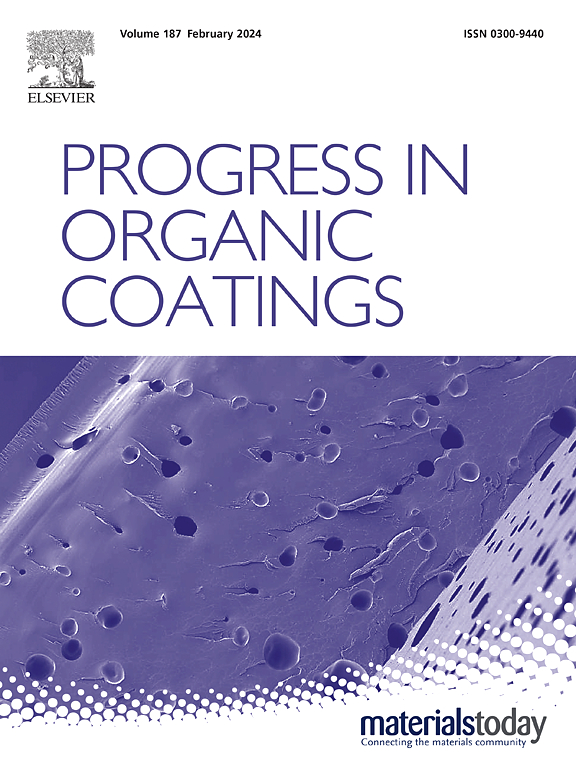Comparison of under-film corrosion behaviors under unsheltered and sheltered exposure conditions
IF 6.5
2区 材料科学
Q1 CHEMISTRY, APPLIED
引用次数: 0
Abstract
Heavy-duty paints are applied to steel structures built in coastal areas. Some structures, such as bridges, are composed of parts that are directly exposed to the rain and other parts that are not exposed to the rain. In the latter parts, corrosion environments are sometimes severer than the former parts. To compare the under-film corrosion behaviors under such different exposure conditions, painted steel sheets were examined under unsheltered and sheltered exposure conditions. After the exposure tests, they were evaluated and analyzed by Electron Probe Micro Analyzer (EPMA), Raman imaging and microscopic FT-IR on cross-sections. In Raman imaging, the distributions of chemical states of corrosion products were obtained and compared with the elemental mapping results by EPMA. These detailed analysis data made it possible for us to consider corrosion behaviors. As a result, uniform corrosion of substrates was found under the unsheltered exposure condition, and localized corrosion of substrates was found under the sheltered exposure condition. In addition, not only distributions of sea salt particles but also chemical states of corrosion products under coating films were different between unsheltered and sheltered exposure. Based on these results, it is considered that corrosion products and sea salt particles were partially washed away by rain under the unsheltered exposure condition but remained under coating films under the sheltered exposure condition. In case of the latter condition, it is considered that sea salt particles in high humidity produced liquid films by deliquescence and caused anodic blisters and localized corrosion.

求助全文
约1分钟内获得全文
求助全文
来源期刊

Progress in Organic Coatings
工程技术-材料科学:膜
CiteScore
11.40
自引率
15.20%
发文量
577
审稿时长
48 days
期刊介绍:
The aim of this international journal is to analyse and publicise the progress and current state of knowledge in the field of organic coatings and related materials. The Editors and the Editorial Board members will solicit both review and research papers from academic and industrial scientists who are actively engaged in research and development or, in the case of review papers, have extensive experience in the subject to be reviewed. Unsolicited manuscripts will be accepted if they meet the journal''s requirements. The journal publishes papers dealing with such subjects as:
• Chemical, physical and technological properties of organic coatings and related materials
• Problems and methods of preparation, manufacture and application of these materials
• Performance, testing and analysis.
 求助内容:
求助内容: 应助结果提醒方式:
应助结果提醒方式:


